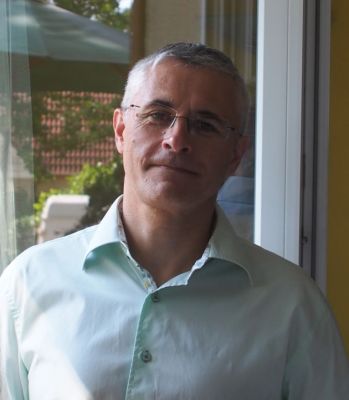Structures, Properties and Modelling of Solids lab., CentraleSupelec, 3 rue Joliot-Curie,
91190 Gif-sur-Yvette, France
jean-michel.gillet@centralesupelec.fr
Short CV
1989-1992: Doctorate in Physics (supervisor Pierre Becker) at Sorbonne University (Paris) in the lab now known as Institute for Mineralogy, Physics of Materials and Cosmochemistry. The PhD thesis dealt with ab-initio computing of electron density under electric fields, and most importantly, wavefunction refinement from Compton scattering data.
1992-1993 PostDoc (with Jerry Hastings and Chi-Chang Kao) at the National Synchrotron Light Source, Brookhaven national Lab, N-Y, USA
1993-1995 Assistant Professor at Paris-East University
1995-2004 Assistant professor at Ecole Centrale Paris
2004-today Full professor at Ecole Centrale Paris now known as CentraleSupelec, University of Paris-Saclay .
The head of the Physics dept of CentraleSupelec for about 13 years and chair of the QCr commission of the IUCr for the 2016-2021 pandemic mandate.
Prof. Gillet teaches 3 courses (3 different levels) on quantum and statistical physics (hence my eponymous books), solid state physics and participates in an multidisciplinary course based on X-ray synchrotron beamline design.
Prof. Jean-Michel Gillet is the author of the book entitled:
Application-Driven Quantum and Statistical Physics, A Short Course for Future Scientists and Engineers,
Volume 1:Foundations, Volume 2: Equilibrium
published by World Scientific in the series Essential Textbooks in Physics
Lecture 19: Jean-Michel Gillet
Phase Space Quantum Crystallography: how about considering the other axis?
Jean-Michel Gillet
Structures, Properties and Modelling of Solids lab., CentraleSupelec, 3 rue Joliot-Curie,
91190 Gif-sur-Yvette, France
jean-michel.gillet@centralesupelec.fr
Abstract
The largest part of Quantum Crystallography is being developed in position space. It is often considered as the most natural way to study chemical bonds. This is amply justified by the direct relation between the electron position probability density and structure factors, whether they come from X-rays or polarized neutrons Bragg scattering experiments. As a result, today's highly flexible models for electron density are limited to describing the position distribution of electrons. However, since Quantum Crystallography aims at addressing equally the wavefunction problem and the mere electron density problem, it becomes legitimate to question the pertinence of ignoring an entire half of phase space. It has been long known that momentum space information is available from inelastic scattering measurement and that it could be combined (if not confronted) with that in position space.
The talk will expose some of the advantages, and accompanying constraints and difficulties, of developing a phase-space view of Quantum Crystallography. We will thus describe how a minimal but sound approach to Quantum Crystallography can be constructed from phase space observables, what the latest attempts have taught us and how close we are to obtaining a broader view of electron behavior, beyond the position space alone.


